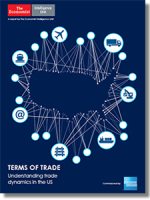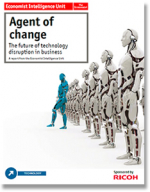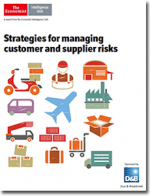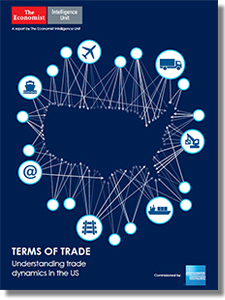Terms of Trade: Understanding Trade Dynamics in the U.S.
This report takes a closer look at the experiences of companies that trade with the US, focusing on trade-related infrastructure, customs regulation and payments and building on the findings of a survey and expert interviews.
The US is the largest market for trade in the world, and companies engaged in trade with the US are generally optimistic about growth prospects over the next five years.
Over 43% of survey respondents expect their company’s trade with the US to increase by more than 10%.
Foreign companies look to future developments in policy and politics, which will shape the environment for trading with the US.
The 2016 US presidential election is also likely to be pivotal in determining the outlook for trade with the US, given the rhetoric on the campaign trail.
Duncan Wood, director, Mexico Institute at the Wilson Centre, US explains: “The fact that US politics goes through cycles where the public and politicians question free trade creates considerable uncertainty for countries and companies doing business with the US.”
If there appears to be a significant risk of a return to protectionism, this might conceivably cause some companies to delay making investments in production facilities in the US.
Mr Wood fears that this is a problem that could worsen in the future if the economic situation of the middle class, which has been largely stagnant since the 2008 crisis, fails to show signs of improvements.
Sean Doherty, head of international trade and investment, World Economic Forum, Switzerland suggests that in response to these challenges the US government needs to make “[not only] an economic case for trade, but also a more philosophical one about the benefits of interaction across borders and being part of a global community”.
The negotiation of new trade deals presents a mixture of opportunities for some and new competitive threats for others. One such agreement, the TPP, aims to chip away at some of the regulatory challenges faced by companies trading with the US.
“It’ll be a game changer,” declares Deborah Elms, executive director, Asian Trade Centre, Singapore, “because it opens up markets and sectors in ways we haven’t seen before.”
Our survey echoes her opinion: 78% of respondents expect the TPP to improve trade opportunities with the US, with 29% expecting substantial improvements.
According to Ms Elms, better trade prospects may force the hand of protectionist governments because “people will move to regions where you can do business easily and out of those areas where it’s more complicated”.
And it will have implications for neighbouring North American countries too, as Mr Wood explains: “If [they] don’t want to lose their competitiveness within the Pacific Rim and globally, they need to work harder on harmonisation and transport and border infrastructure.”
This report identifies some of the key challenges that need to be addressed.
What’s Related




Favorites





